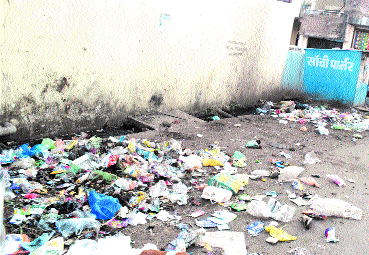Authorities’ claims fall flat: Two tales of cleanliness drive Bhopal undergoes survey for Swachh Survekshan 2024
| Date :23-Mar-2025 |

Staff Reporter
Bhopal is currently undergoing assessment for the Swachh Survekshan 2024, a national initiative to rank cities based on cleanliness and sanitation. The city has shown improvement in recent years, securing the 5th rank in the previous survey. This year, Bhopal aims for an even higher position, with ongoing efforts made by the Bhopal Municipal Corporation (BMC).
The national cleanliness assessment drive, Swachh Survekshan 2024, commenced in Bhopal on Friday, as a dedicated survey team from Delhi began ground verification across the city.
Over the next week, the team will evaluate Bhopal’s sanitation infrastructure, waste
management systems, and citizen engagement under the world’s largest urban cleanliness survey, organised by the Union Ministry of Housing and Urban Affairs.
The survey began with inspections across four zones on the first day, starting with Kolar, followed by Bawaria Kalan and Shahpura, where the team conducted evening assessments. On Saturday, the survey team inspected New Market, Badi Sabji Mandi and other commercial areas.
When ‘The Hitavada’ contacted Swachh Survekshan officials, a BMC spokesperson stated, “
The survey team arrived on Friday for inspection and is conducting its survey very efficiently. We officials are unaware of the specific areas they will inspect, as they are responding to individual complaints.”
Bhopal has made strides in cleanliness initiatives, including back lane development and efforts related to the GIS 2025, the issue of garbage accumulation in front lanes presents a significant challenge for the Swachh Survekshan 2024. Addressing the systemic issues in waste management and ensuring consistent cleanliness across all public spaces will be crucial for Bhopal to achieve its goal of a higher ranking.
However, reports indicate a contrasting situation in the front lanes of Bhopal, where piles of garbage have been observed.
This suggests challenges in maintaining consistent cleanliness throughout the city, despite the back lane development efforts. Visible cleanliness remains a critical aspect of the Swachh Survekshan and the presence of garbage in prominent areas could negatively impact Bhopal’s overall ranking. Officials highlighted that the successful completion of
beautification of the city for Global Investors Meet 2025 (GIS) played a pivotal role in boosting Bhopal’s scores in SSS 2024 results. The infrastructure enhancements and cleanliness drives implemented for the GIS have significantly contributed to the city’s improved appearance. Ground verification for the Swachh Survekshan 2024 has commenced in Bhopal, with a team from Delhi evaluating the city’s sanitation infrastructure. The survey focuses on key parameters, including basic cleanliness, Open Defecation Free (ODF++) status, and the management of solid waste through a star rating system. Visible cleanliness is a significant component of the evaluation. Madhya Pradesh, having already completed basic cleanliness assessments in 269 cities, is now prioritising higher certifications like ODF++ and Water+ to enhance urban liveability.
Bhopal has been actively preparing for the survey, evident in the high citizen feedback received, exceeding 1.7 lakh responses. The BMC has also undertaken cleaning drives and focused on improving visible cleanliness across the city. A notable initiative includes the redevelopment of approximately 40 back lanes into public spaces . This focus on back lanes aligns with the Swachh Survekshan’s emphasis on cleanliness in these areas. The Urban Administration and Housing Department has mobilised youth, civil society groups, and public representatives to support the campaign. “Swachh Survekshan isn’t just a ranking exercise; it’s a movement to transform cities into healthier, greener spaces,” said an official. The beautification efforts carried out for the Global Investors Summit (GIS) 2025 in Bhopal are believed to have positively influenced the city’s appearance in certain areas which are in lime light only and the areas which are less populated are ignored. However, the continued presence of garbage in front lanes suggests that these improvements might have been localised and did not fully address the city’s broader waste management challenges.
